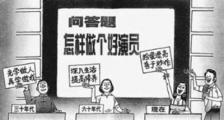2010年公共英语三级考试写作优秀范文
阅读 : 次
Stories of Christmas
In many countries of the world, The celebration of Christmas on December 25th is a high point of the year. From November onward, it is impossible to forget that Christmas is coming. Colored lights decorate many town centers and shops, along with shimmy decorations and artificial snow painted on shop windows. In streets and shops, “Christmas trees” (real or plastic evergreen conifer trees) will also be decorated with lights and Christmas ornaments. Shopping centers become busier as December approaches and often stay open till late. By mid-December, most homes will also be decorated with Christmas trees, colored lights and paper or plastic decorations around the rooms. These days many more people also decorate garden trees or house walls with colored electric lights, a habit, which has been long popular in USA. In many countries, most people post Christmas greeting cards to their friends and families, and these cards will be hung on the walls of their homes.
The custom of sending Christmas cards started in Britain in 1840 when the first “Penny Post” public postal deliveries began. (Helped by the new railway system, the public postal service was the 19th century's communication revolution, just as e-mail is for us today.) As printing method improved, Christmas cards were produced in large numbers from about 1860. Today, pictures are often about jokes, winter pictures, Father Christmas, or romantic scenes of life in past times.
Father Christmas (or Santa Claus) has become the symbol of Christmas. Pictures will be seen everywhere of the old man with long white beard, red coat, and bag of toys. Children are taught that he brings them presents the night before Christmas, and many children up to the age 7 or 8 really believe this is true. In most countries, it is said that he lives near the North Pole, and arrives through the sky on a sledge (snow-cart) pulled by reindeer. He comes into houses down the chimney at midnight and places presents for the children in socks or bags by their beds or in front of the family Christmas tree. In shops or at children's parties, someone will dress up as Father Christmas and give small presents to children, or ask them what gifts they want for Christmas. Christmas can be a time of magic and excitement for children.
Father Christmas is based on a real person, St. Nicholas, which explains his other name “Santa Claus” which comes from the Dutch “Sinterklaas.” Nicholas was a Christian leader from Myra (in modern-day Turkey) in the 4th century AD. He was very shy, and wanted to give money to the poor people without their knowing about it. It is said that one day, he climbed up the roof of a house and dropped a purse of money down the chimney. It happened to land in the stocking which a girl had put to dry by the fire! This may explain the belief that Father Christmas comes down the chimney and places gifts in children's stockings.
In English speaking countries, the day following Christmas Day is called “Boxing Day.” This word comes from the custom which started in the Middle Ages around 800 years ago: Churches would open their “alms box” (boxes in which people had placed gifts of money) and distribute the contents to poor people in the neighborhood on the day after Christmas. The tradition continues today.
本文标题:2010年公共英语三级考试写作优秀范文 - 全国英语等级考试_PETS作文_公共英语等级考试写作In many countries of the world, The celebration of Christmas on December 25th is a high point of the year. From November onward, it is impossible to forget that Christmas is coming. Colored lights decorate many town centers and shops, along with shimmy decorations and artificial snow painted on shop windows. In streets and shops, “Christmas trees” (real or plastic evergreen conifer trees) will also be decorated with lights and Christmas ornaments. Shopping centers become busier as December approaches and often stay open till late. By mid-December, most homes will also be decorated with Christmas trees, colored lights and paper or plastic decorations around the rooms. These days many more people also decorate garden trees or house walls with colored electric lights, a habit, which has been long popular in USA. In many countries, most people post Christmas greeting cards to their friends and families, and these cards will be hung on the walls of their homes.
The custom of sending Christmas cards started in Britain in 1840 when the first “Penny Post” public postal deliveries began. (Helped by the new railway system, the public postal service was the 19th century's communication revolution, just as e-mail is for us today.) As printing method improved, Christmas cards were produced in large numbers from about 1860. Today, pictures are often about jokes, winter pictures, Father Christmas, or romantic scenes of life in past times.
Father Christmas (or Santa Claus) has become the symbol of Christmas. Pictures will be seen everywhere of the old man with long white beard, red coat, and bag of toys. Children are taught that he brings them presents the night before Christmas, and many children up to the age 7 or 8 really believe this is true. In most countries, it is said that he lives near the North Pole, and arrives through the sky on a sledge (snow-cart) pulled by reindeer. He comes into houses down the chimney at midnight and places presents for the children in socks or bags by their beds or in front of the family Christmas tree. In shops or at children's parties, someone will dress up as Father Christmas and give small presents to children, or ask them what gifts they want for Christmas. Christmas can be a time of magic and excitement for children.
Father Christmas is based on a real person, St. Nicholas, which explains his other name “Santa Claus” which comes from the Dutch “Sinterklaas.” Nicholas was a Christian leader from Myra (in modern-day Turkey) in the 4th century AD. He was very shy, and wanted to give money to the poor people without their knowing about it. It is said that one day, he climbed up the roof of a house and dropped a purse of money down the chimney. It happened to land in the stocking which a girl had put to dry by the fire! This may explain the belief that Father Christmas comes down the chimney and places gifts in children's stockings.
In English speaking countries, the day following Christmas Day is called “Boxing Day.” This word comes from the custom which started in the Middle Ages around 800 years ago: Churches would open their “alms box” (boxes in which people had placed gifts of money) and distribute the contents to poor people in the neighborhood on the day after Christmas. The tradition continues today.
本文地址:http://www.dioenglish.com/writing/englishtest/pets/24368.html
上一篇:2010年9月公共英语三级考试写作预测范文 下一篇:全国公共英语三级写作精选范文





